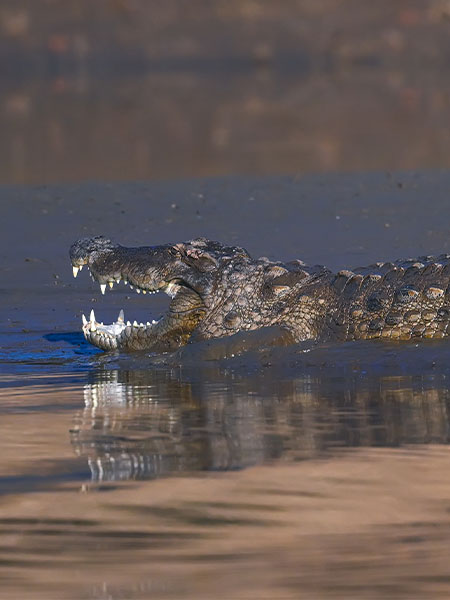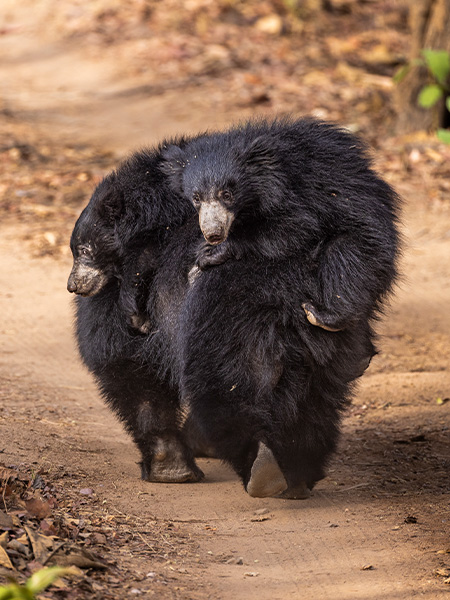Wildlife of Satpura National Park
Situated in the lap of Central India; Satpura National Park, popularly known as Madhai, stands nestled in the Mahadeo hills of the Satpura range.
Satpura is a Sanskrit word that translates to Seven Mountains (sat-seven, pura– mountain). Spread over a sprawling 1427 sq. kms.; Satpura National Park was formed in 1981 with Satpura, Pachmari, and Bori sanctuaries with an altitude ranging from 300 to 1,352 meters (980 to 4,436 feet).
The rugged terrain of Satpura National park is dotted with deep, yawning valleys and gorges, stunning sandstone peaks, gurgling rivulets and brooks, cascading waterfalls, dense forests of Sal and Teak, and an abundance of medicinal plants.
Satpura has a rich tapestry of flora and fauna. Satpura National Park is a bird watcher’s paradise. The water bodies attract a host of local and migratory birds, and over 300 species of birds are found in this bountiful landscape. Satpura hosts a variety of birds, including many migratory species from November to March. The hot spots for birding include the Tawa reservoir, the Denwa Backwaters, and the grasslands and fields of the Satpura National park.



Some of the thriving fauna of Satpura National Park include Spotted Deer, Indian Bison (Gaur), Tigers, Leopards, Wild boars, Wild dogs (locally called Dholes), Sloth bears, Black Bucks, Porcupine, Sambhar, Four Horned antelopes (Chowsingha), Otters, Crocodiles, Malabar squirrels, Langurs, Honey badgers, etc.



About 31 species of reptiles including a variety of snakes, Indian Chameleons, and Turtles like Soft-shelled Turtles, Marsh Crocodiles; home in the thriving forests of Satpura.
The Malabar Squirrel or the Indian Giant Squirrel, White Bison, and Blackbucks are some of the unique attractions of Satpura National Park.



FAQs Satpura National Park
-
Q.What is Satpura famous for?
Satpura is famous for the Satpura National park which has a teeming biodiversity of flora and fauna, including medicinal plants.
Some of the wildlife here include Leopards, Tigers, Sloth Bears, Dholes (Wild Dogs), Indian Giant Flying Squirrels, Indian Chameleon, Black Bucks, Muntjac, Four-Horned Antelopes, Porcupines, Chital, Sambhar, etc.
Satpura has a rich, thriving biodiversity of birds with over 300 species that include many waders and migratory birds that are attracted to the Denwa River. It has a teaming population of amphibians and reptiles including the Marsh crocodile.
-
Q.Why is it called Satpura?
The word Satpura is derived from two words Sat meaning seven, and Pura meaning mountains. These seven mountains form the watershed between the Narmada river in the North and Tapti river in South. The Satpura peaks are around 4000 feet high and these include the Mahadeo Hills to the north, the Maikala Range to the east, and the Rajpipla Hills to the west.
-
Q.Which is the best gate of Satpura National Park?
Madhai Gate is the main entry gate at Satpura National Park and is widely popular of all the entry gates. The others include Jamani Dev Gate, Pachmarhi, Churna, and Parsapani gate. Madhadi is dotted with deep, yawning valleys and gorges, stunning sandstone peaks, gurgling rivulets and brooks, cascading waterfalls, dense forests of Sal and Teak, and an abundance of medicinal plants.
-
Q.Which is the best time to visit Satpura National Park?
The best time to visit Satpura is from October to June. Summers are great for animal sightings, as is the onset of spring with the flowering trees of Central India dotting the landscape with their fascinating hues and the animals up and about flashing their gleaming, new, post-winter coats.
Satpura in winter has its own mystical charm with the mist-clad landscape and dew-speckled flora. As the winter sun makes an appearance from behind the mist, it casts a spell on the animals and birds; and they can be seen bustling or ambling around the forests.
-
Q.How to book a Safari in Satpura National Park?
You can get in touch with our trip curators at Pugdundee Safaris who will be more than happy to help you book a mix of custom-tailored safaris.
Map of Satpura National Park




